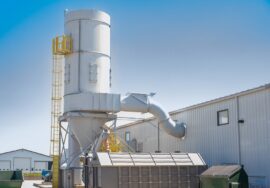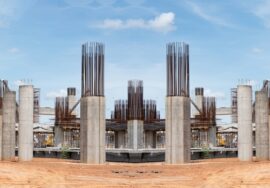
Carbon Footprint Reduction in Construction Projects
Carbon Footprint Reduction in Construction Projects
In today’s era of rapid urbanization, the construction industry is one of the largest contributors to global greenhouse gas emissions. Buildings account for nearly 40% of total energy-related CO₂ emissions worldwide. This makes carbon footprint reduction in construction a critical priority for achieving a sustainable future.
By adopting innovative materials, energy-efficient technologies, and eco-friendly design practices, builders can significantly lower their environmental impact. Effective carbon footprint reduction strategies not only benefit the planet but also reduce operational costs and enhance project value.
Understanding Carbon Footprint in Construction
A carbon footprint represents the total amount of carbon dioxide (CO₂) and other greenhouse gases emitted directly or indirectly throughout the life cycle of a construction project. This includes emissions from:
-
Material production and transportation
-
On-site energy consumption
-
Machinery operation
-
Waste generation
-
Building maintenance and demolition
Carbon footprint reduction involves minimizing these emissions through sustainable construction techniques, renewable energy integration, and efficient resource management.
Why Carbon Footprint Reduction Matters
Reducing the carbon footprint in construction is not only an environmental necessity but also an economic opportunity. Here’s why it’s crucial:
-
Environmental Protection: Cuts greenhouse gas emissions and slows climate change.
-
Cost Efficiency: Saves energy and resources, reducing long-term operational expenses.
-
Regulatory Compliance: Meets international sustainability standards and government policies.
-
Market Value: Green buildings attract higher property value and tenant satisfaction.
-
Corporate Responsibility: Builds a reputation for environmental stewardship.
By implementing carbon footprint reduction measures, the construction industry can play a vital role in global sustainability goals.
Top Strategies for Carbon Footprint Reduction
1. Use of Sustainable Materials
Switching to eco-friendly construction materials like bamboo, recycled steel, and fly ash concrete drastically reduces embodied carbon. Locally sourced materials further cut transportation emissions.
2. Energy Efficiency in Design
Incorporating passive design elements such as natural ventilation, daylighting, and proper insulation lowers the energy demand of buildings. This approach is one of the most effective methods of carbon footprint reduction.
3. Renewable Energy Integration
Installing solar panels, wind turbines, or geothermal systems during construction enables buildings to operate on clean energy, reducing dependence on fossil fuels.
4. Low-Emission Equipment
Using low-emission construction equipment and electric vehicles helps decrease on-site air pollution and carbon output.
5. Waste Management and Recycling
Implementing waste management in construction ensures efficient recycling and reuse of materials, minimizing landfill waste and CO₂ emissions.

6. Green Roofs and Landscaping
Integrating green roofs and sustainable landscaping improves air quality, reduces heat absorption, and offsets carbon emissions naturally.
Carbon Footprint Reduction in India
India’s construction sector is rapidly adopting sustainable approaches to achieve carbon footprint reduction goals. Initiatives such as the Energy Conservation Building Code (ECBC) and Green Rating for Integrated Habitat Assessment (GRIHA) promote energy efficiency and low-carbon development.
The government also supports net-zero energy buildings, which combine renewable power with efficient design to achieve near-zero emissions. These efforts align with India’s commitment to achieving Net Zero by 2070, as pledged under the Paris Agreement.
Benefits of Carbon Footprint Reduction
Implementing carbon footprint reduction strategies brings numerous benefits to the construction industry:
-
Reduced Operating Costs: Lower energy and maintenance expenses.
-
Enhanced Building Performance: Improved comfort, efficiency, and durability.
-
Improved Public Health: Cleaner air and reduced pollution.
-
Green Certification Eligibility: Compliance with LEED and IGBC standards.
-
Positive Brand Image: Builds trust among clients and communities.
These advantages demonstrate that carbon footprint reduction is not just an environmental obligation but a smart business investment.
Smart Technologies for Carbon Footprint Reduction
Modern technology is revolutionizing how construction companies approach sustainability. Using smart building technology and life cycle assessment (LCA) tools, project managers can track and optimize energy consumption, emissions, and material use in real-time.
Building Information Modeling (BIM) also supports efficient planning and coordination, reducing resource waste and unnecessary carbon emissions throughout the project lifecycle.
Partner with AMS India for Sustainable Construction
At AMS India, we are dedicated to promoting carbon footprint reduction through innovative design, efficient project management, and advanced technology.
Our experts integrate green construction practices, renewable energy systems, and sustainable materials to help you build environmentally responsible structures. From planning to execution, AMS India ensures every project supports a low-carbon, sustainable future.
Conclusion
Achieving carbon footprint reduction in construction is not an option—it’s a necessity for our planet’s survival. By embracing sustainable materials, renewable energy, and efficient design, the construction industry can dramatically reduce its environmental impact.
With conscious efforts and expert guidance from sustainability-driven partners like AMS India, the path to a greener, cleaner future is well within reach. Every structure built with responsibility today contributes to a more resilient tomorrow.
Read more related articles to enhance your knowledge and make informed decisions
Cost-Effective Modular Construction: Fast, and Sustainable Building Solutions
Smart Modular Buildings: Innovative, Efficient, and Sustainable Construction








